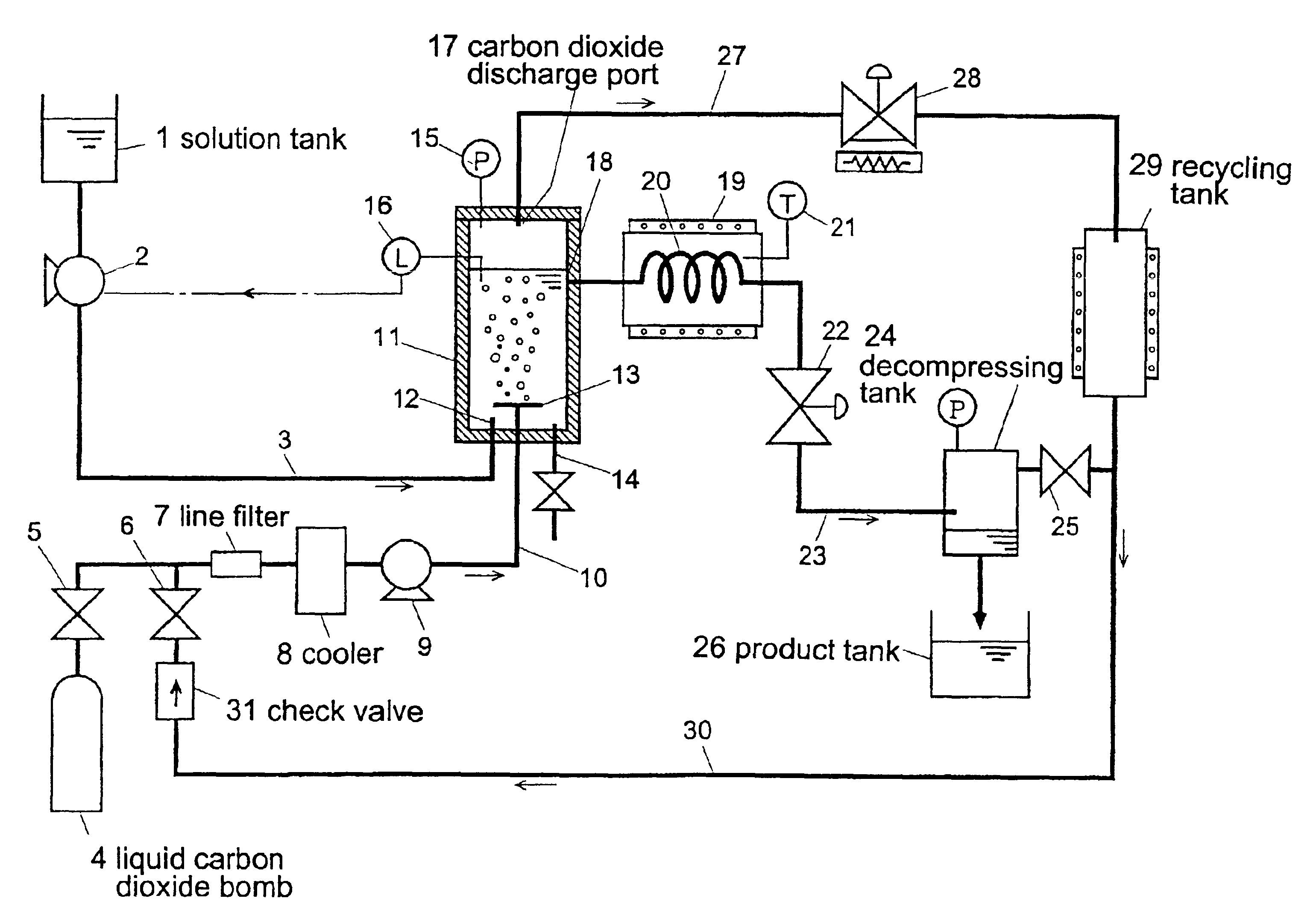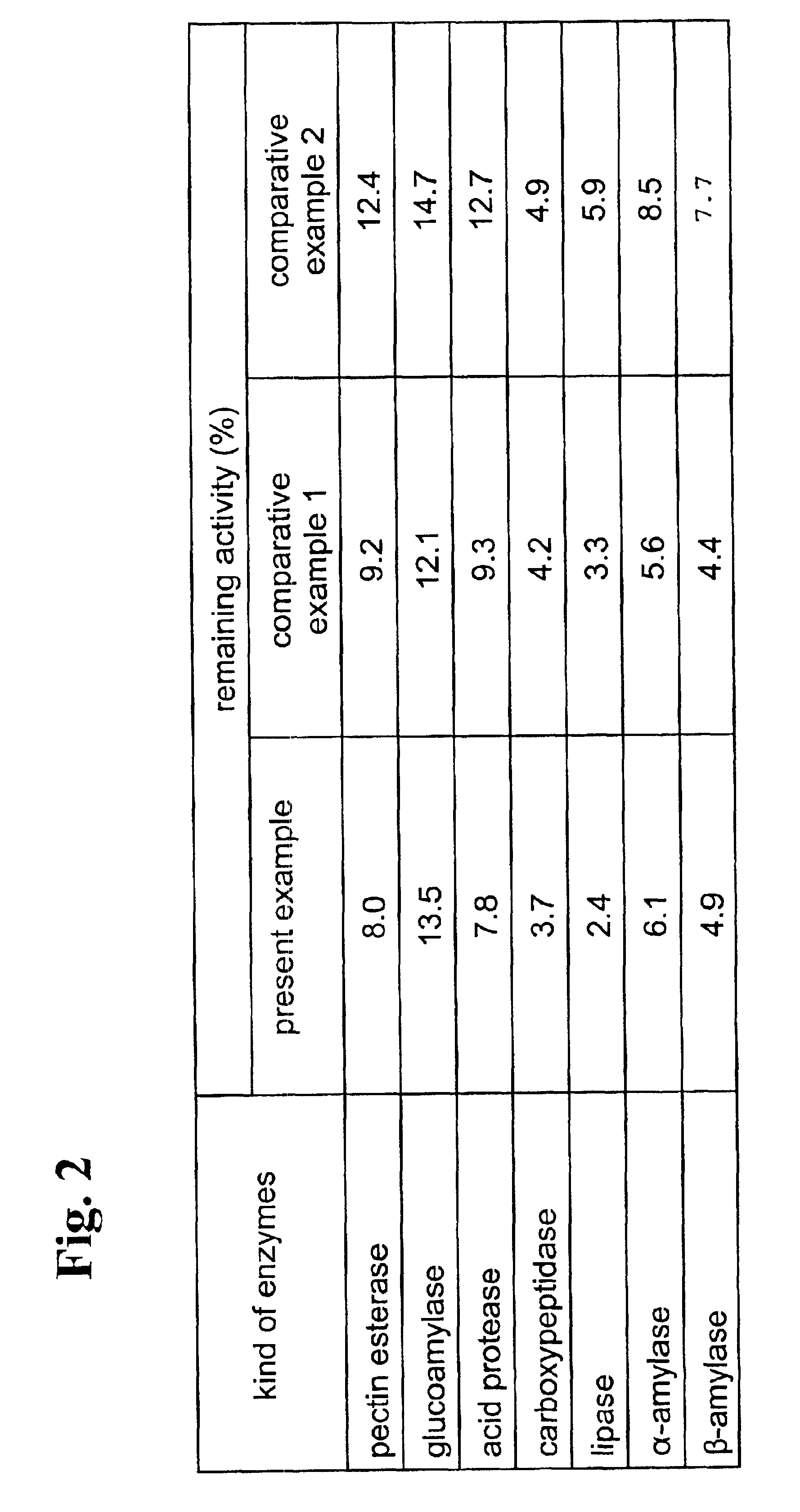Continuous processing method and continuous processing apparatus for liquid-form substance, and liquid-form substance processed thereby
a technology of liquid-form substance and processing apparatus, which is applied in the direction of solvent extraction, pressurized chemical process, separation process, etc., can solve the problems of high processing cost, deterioration of fresh sake quality, and affecting the taste of fresh sak
- Summary
- Abstract
- Description
- Claims
- Application Information
AI Technical Summary
Benefits of technology
Problems solved by technology
Method used
Image
Examples
Embodiment Construction
, a critical processing step was carried out for 15 minutes at a temperature of 40.degree. C. under a pressure of 250 atm; and at Comparative Example 2, a heat processing was carried out for one minute at a temperature of 85.degree. C.
As apparent from FIG. 2, two methods using the subcritical and supercritical fluid, i.e. the Present Example and Comparative Example 1, show enzyme deactivation effects higher than that of the heat processing method of Comparative Example 2. Also, there is no significant difference between the deactivation effects of the Present Example and Comparative Example 1. In other words, by the processing method according to the present invention wherein the critical processing step was carried out in a very short time, such as only one minute, there can be obtained the same deactivation effect as that of Comparative Example 1 wherein the critical processing step requires 15 minutes.
At the same time as the above experiment, the remaining spore number of ascospo...
PUM
 Login to View More
Login to View More Abstract
Description
Claims
Application Information
 Login to View More
Login to View More - R&D
- Intellectual Property
- Life Sciences
- Materials
- Tech Scout
- Unparalleled Data Quality
- Higher Quality Content
- 60% Fewer Hallucinations
Browse by: Latest US Patents, China's latest patents, Technical Efficacy Thesaurus, Application Domain, Technology Topic, Popular Technical Reports.
© 2025 PatSnap. All rights reserved.Legal|Privacy policy|Modern Slavery Act Transparency Statement|Sitemap|About US| Contact US: help@patsnap.com



